Abstract
Pertussis surveillance was carried out from 1974 to 1981 among a population of 24 000 in the Machakos district of Kenya by fortnightly or monthly home visits. The diagnosis was verified by a physician according to standard criteria including bacteriological and haematological findings. Since not all cases could be diagnosed with certainty, each case was scored from 0 to 3 according to the probability of pertussis. During the surveillance a vaccine trial was carried out: 436 children receiving two diphtheria-pertussis-tetanus (DPT) immunizations 6 months apart were compared with 466 children receiving the conventional three doses 3 months apart.
The agglutinating antibody response was determined in approximately 100 children in the trial at 1 month, 2 years, 3¼ years and 4¼ years after completing the immunizations. The results showed no difference in titres between the 2-dose and 3-dose groups at one month after the last immunization. Waning of antibodies proceeded more rapidly in the 2-dose group, the differences between both groups becoming statistically significant after 2 years.
Two epidemic waves of pertussis occurred during the seven years of surveillance. A third epidemic did not materialize, possibly because of increased herd immunity due to the immunizations. The case fatality rate was 1% and was highest (2.6%) among infants. During the 4 years following completion of the immunizations, 36 children in the vaccine trial, based on the cumulative probability of pertussis, yielded 16.7 cases. The number of “cases” so defined did not differ significantly between the two immunized groups, although there was a suggestion of greater protection with the 3-dose schedule. Compared with the observed number of “cases” among 1281 children of the same birth cohorts not included in the trial, the reduction among the trial children (both immunized groups) was 54%.
Full text
PDF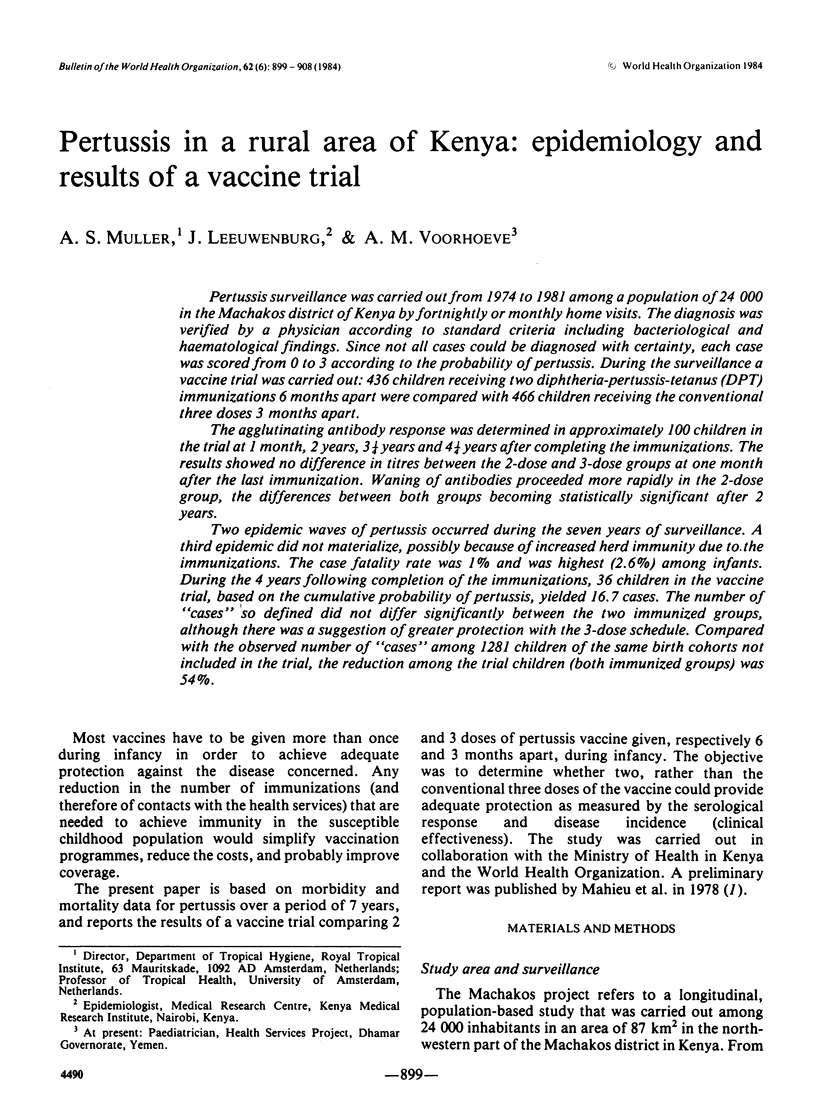
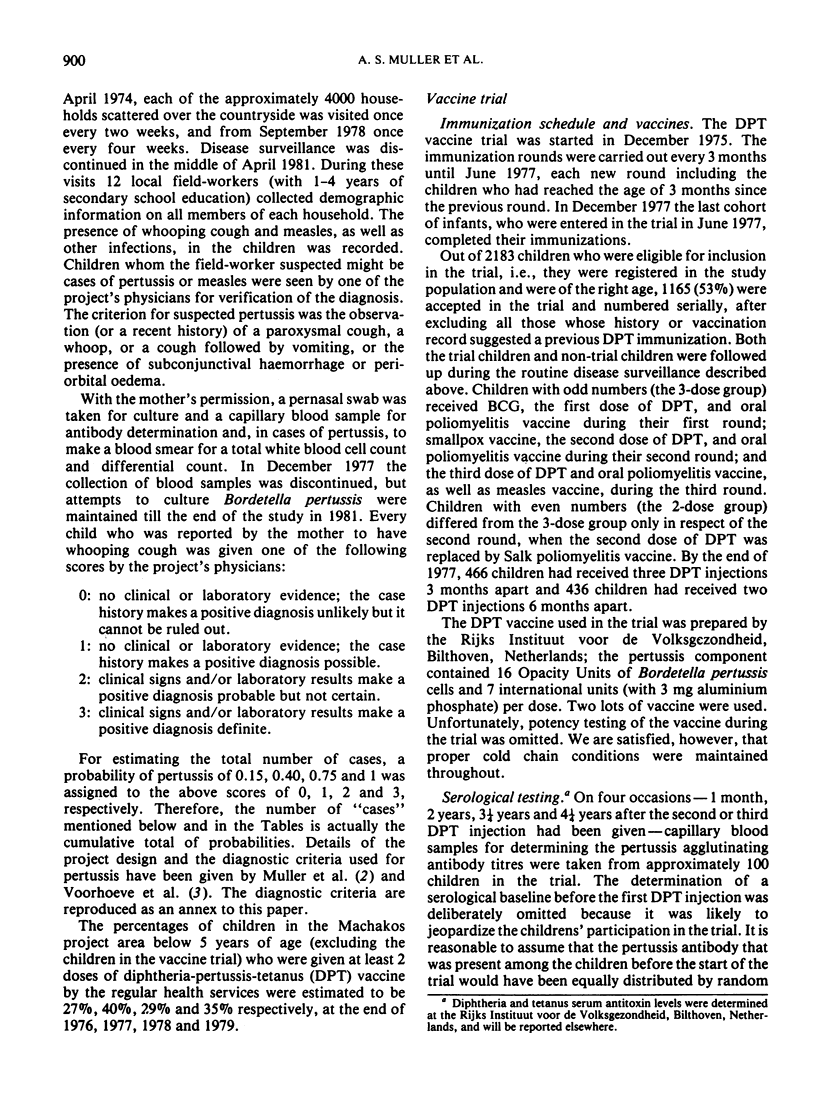
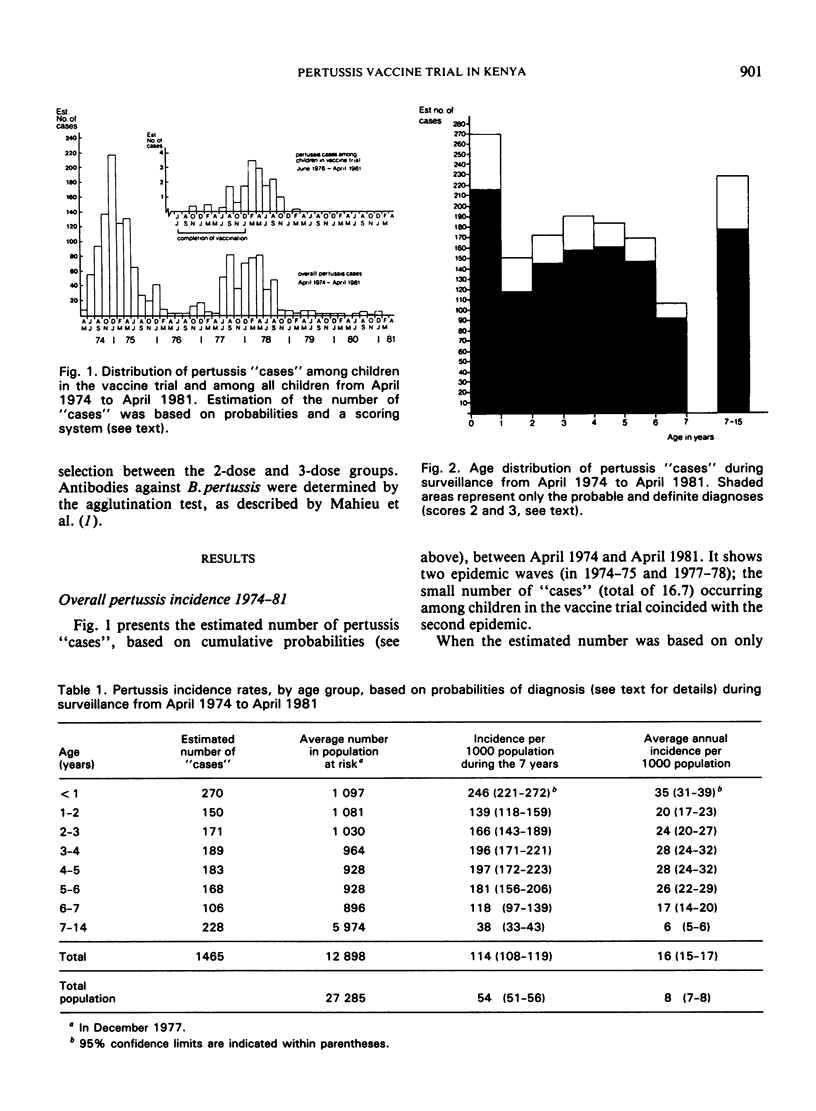
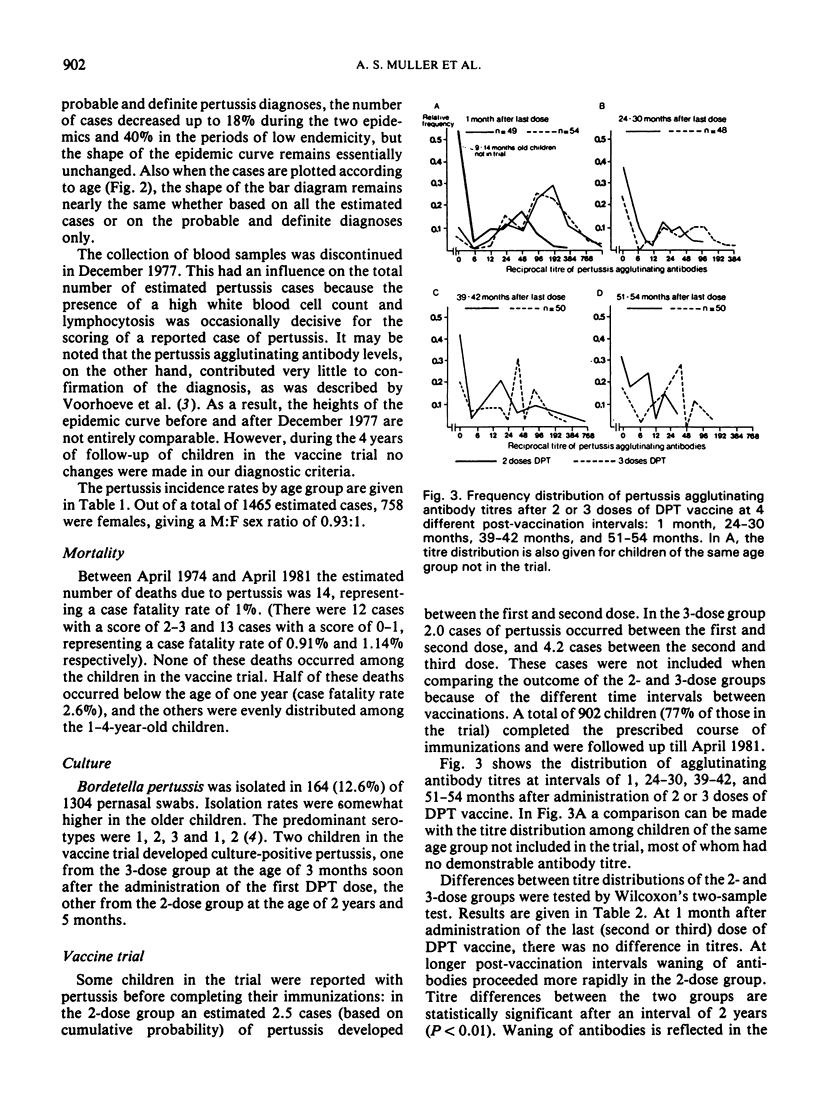
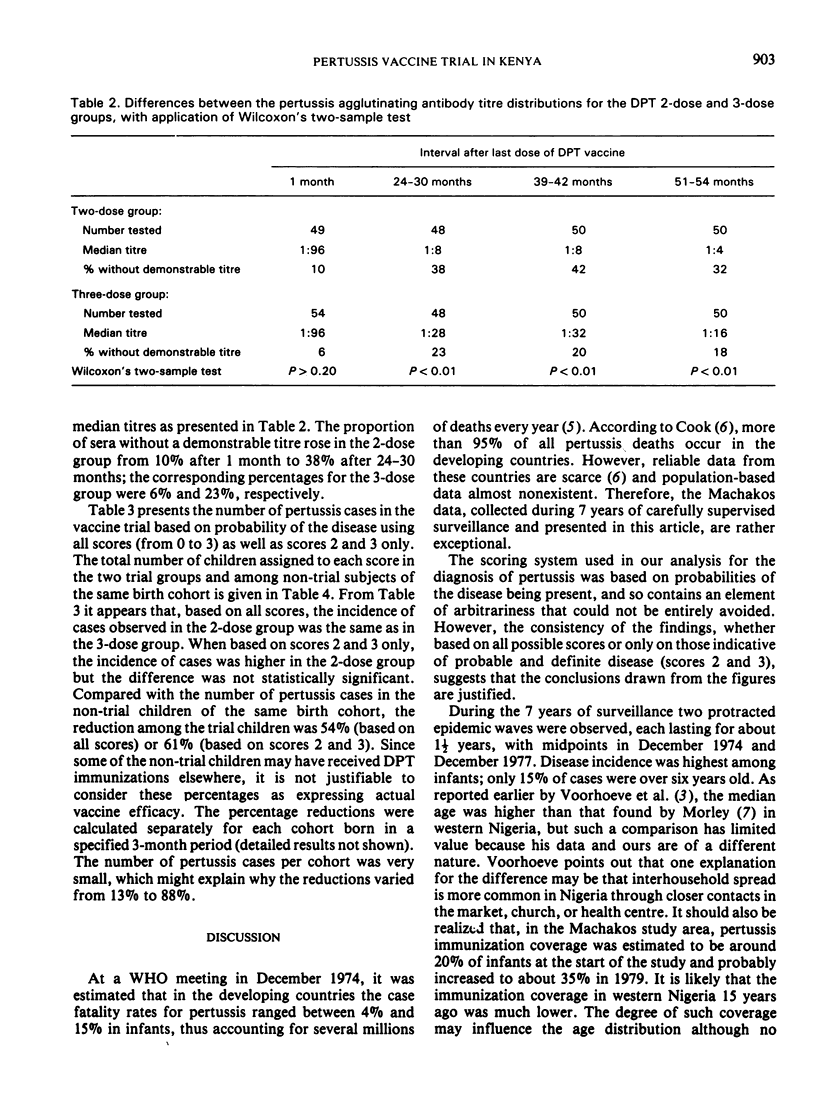
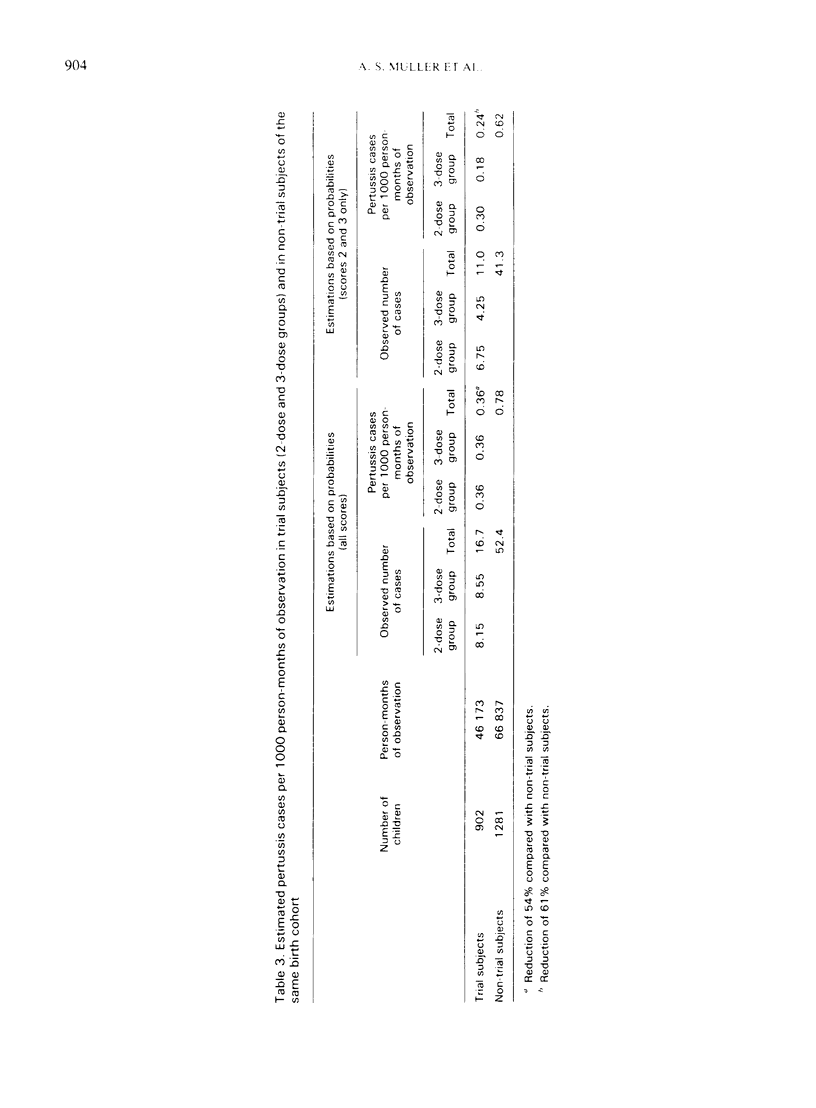
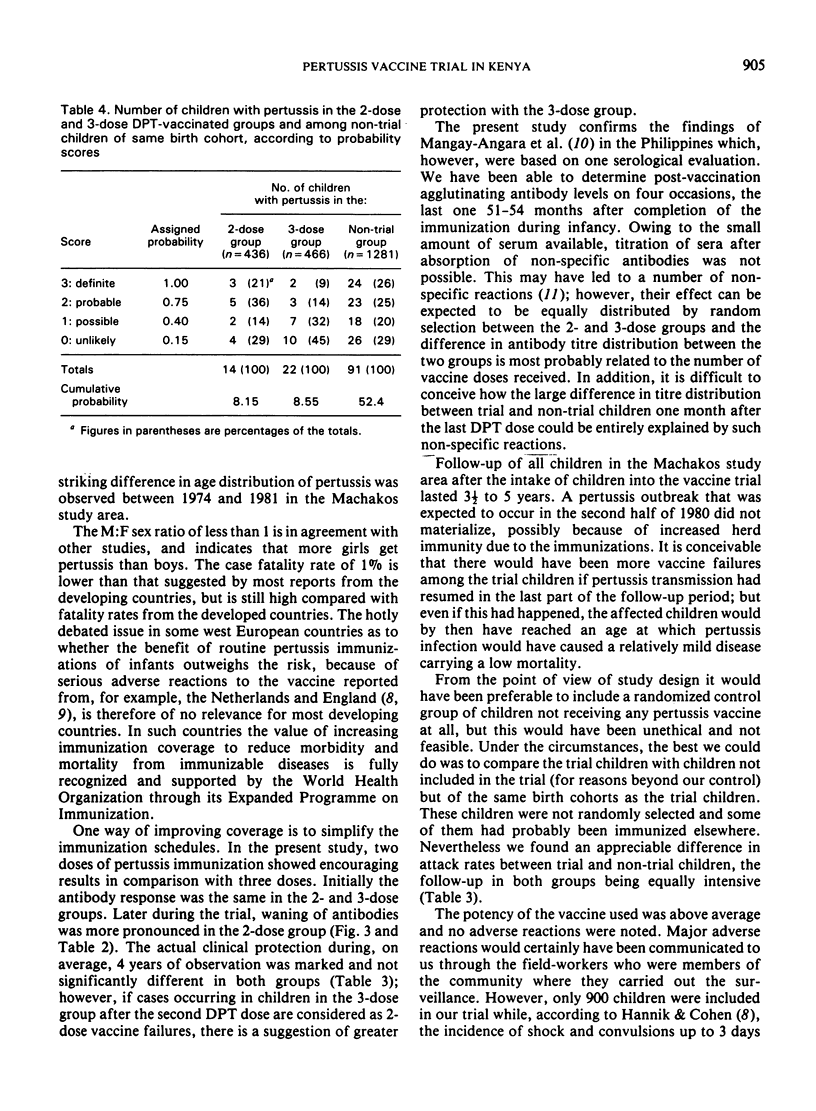
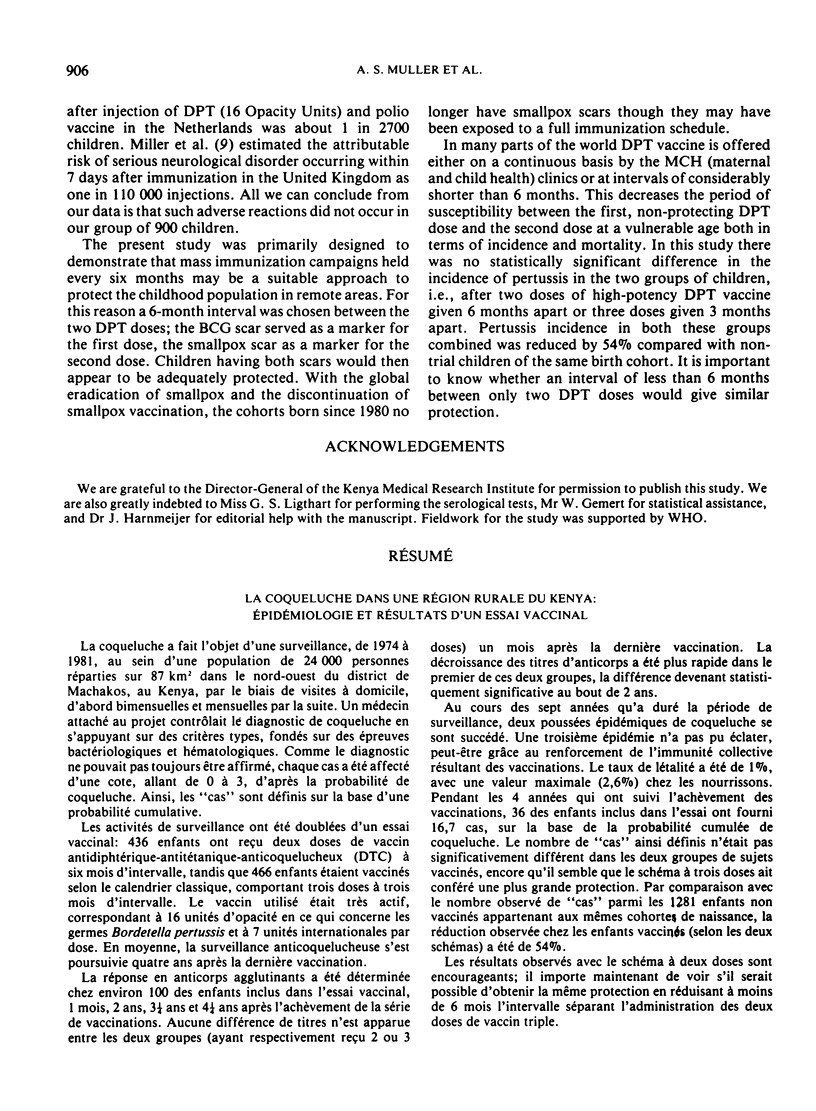
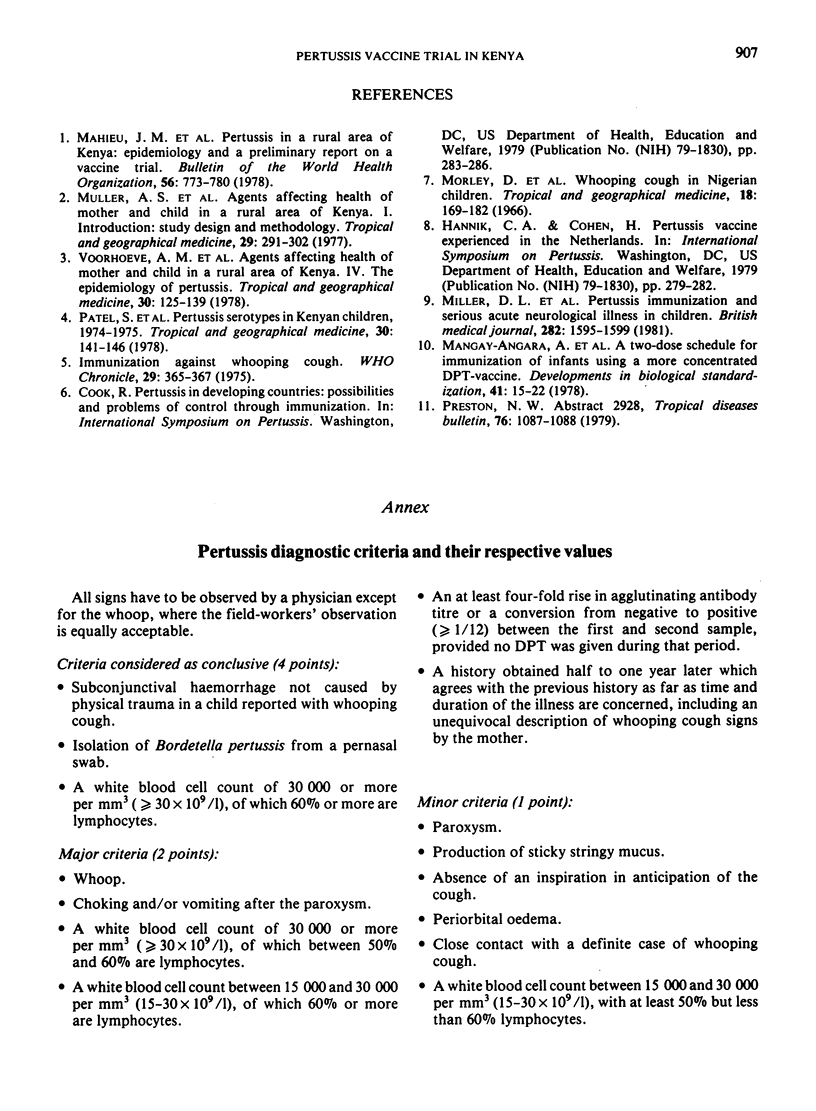
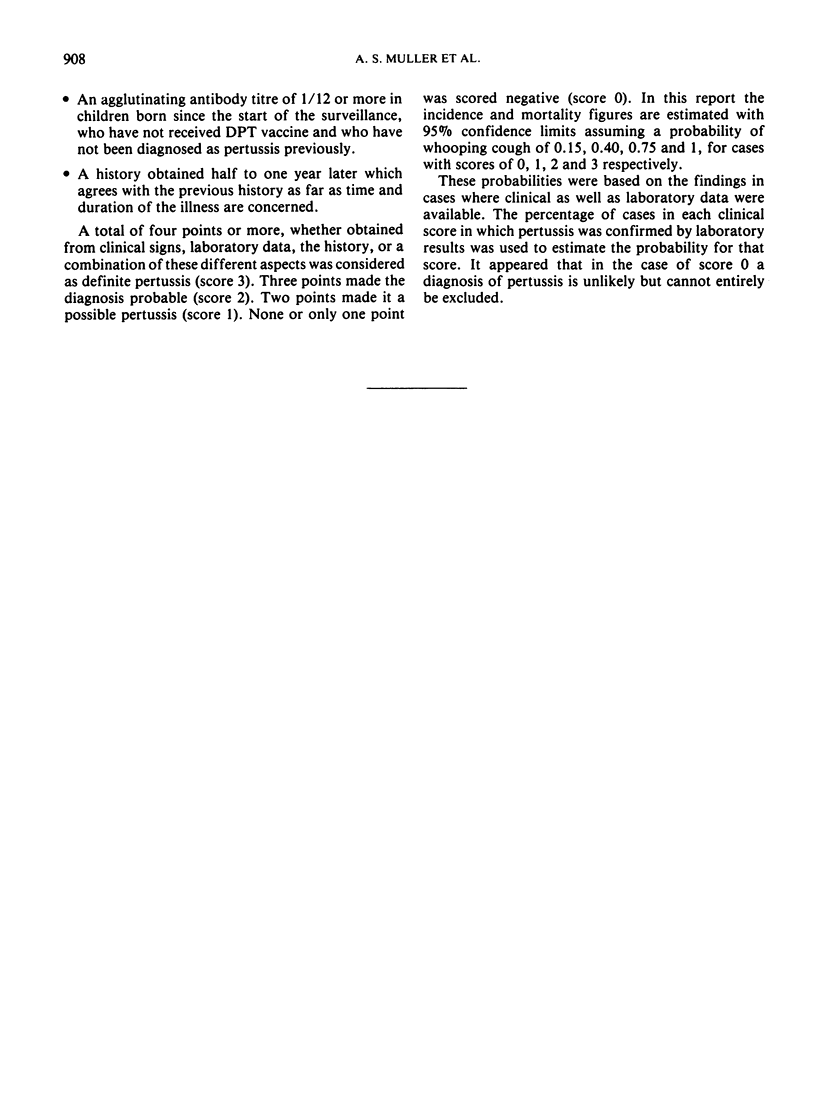
Selected References
These references are in PubMed. This may not be the complete list of references from this article.
- Mahieu J. M., Muller A. S., Voorhoeve A. M., Dikken H. Pertussis in a rural area of Kenya: epidemiology and a preliminary report on a vaccine trial. Bull World Health Organ. 1978;56(5):773–780. [PMC free article] [PubMed] [Google Scholar]
- Mangay-Angara A., Fulgencio L., Casabal G., Gudani L., Sumpaico J., Ocampo A., Nagel J., Hagenaars A. M., van Hemert P. A., Cohen H. A two-dose schedule for immunization of infants using a more concentrated DPT-vaccine. Dev Biol Stand. 1978;41:15–22. [PubMed] [Google Scholar]
- Miller D. L., Ross E. M., Alderslade R., Bellman M. H., Rawson N. S. Pertussis immunisation and serious acute neurological illness in children. Br Med J (Clin Res Ed) 1981 May 16;282(6276):1595–1599. doi: 10.1136/bmj.282.6276.1595. [DOI] [PMC free article] [PubMed] [Google Scholar]
- Patel S., Schoone G., Ligthart G. S., Gikken H., Preston N. W. Machakos project studies. Agents affecting health of mother and child in a rural area of Kenya. V. Pertussis sentypes in Kenyan children 1974--1975. Trop Geogr Med. 1978 Mar;30(1):141–146. [PubMed] [Google Scholar]
- Voorhoeve A. M., Muller A. S., Schulpen T. W., t' Mannetje W., van Rens M. Machakos project studies. Agents affecting health of mother and child in a rural area of Kenya. IV: The epidemiology of pertussis. Trop Geogr Med. 1978 Mar;30(1):125–139. [PubMed] [Google Scholar]


